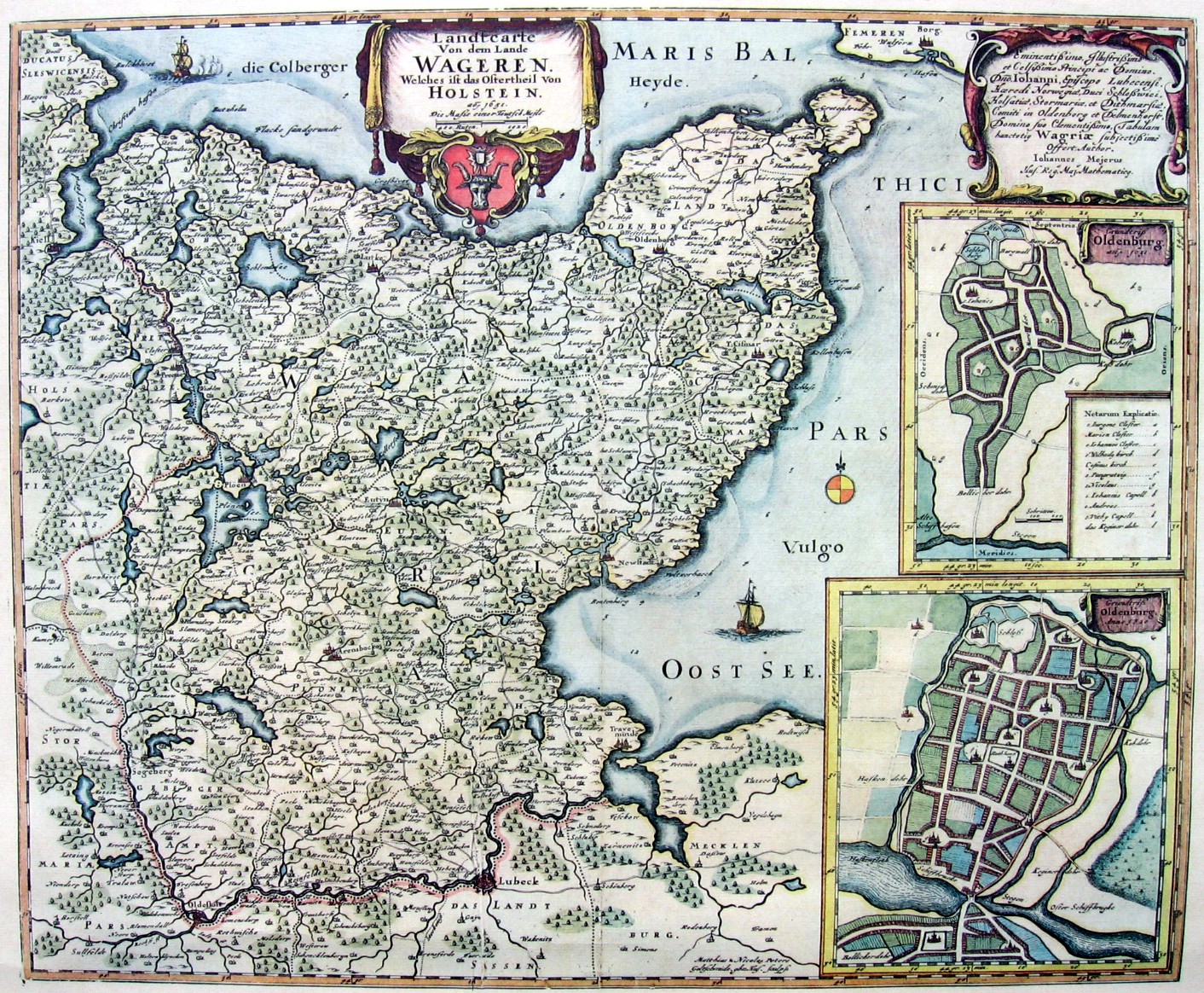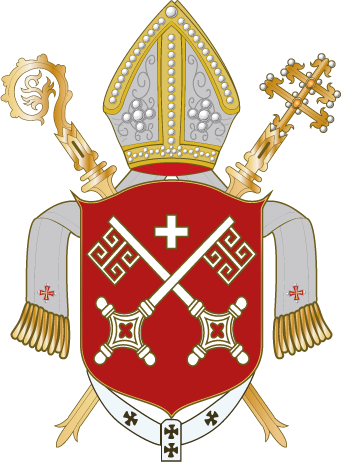|
Unwan, Archbishop Of Bremen
Unwan (or Unwin) (died 27 January 1029 in Bremen) was the Archbishop of Hamburg-Bremen from 1013 until his death. Unwan was granted his see on the agreement that his inheritance would go to the diocese on his death. Throughout his tenure, he was in conflict with the equally ambitious Bernard II, Duke of Saxony, as was his successor, Adalbert. In 1020, however, he allied with Empress Cunigunda to persuade the Emperor Henry II to reconcile with Bernard. Around 1019, Canute the Great, Conrad II, and Unwan arranged a peace in the north of Germany and a pact against the Slavs. Unwan and , Bishop of Oldenburg, began anew the Christianisation of the Obodrites of Wagria following decades of mild rebellion. The work of the archbishop was largely successful, save for the violent uprising precipitated by Benno's ecclesiastical land claims. In 1021, the Obodrites accepted the overlordship of the archdiocese as opposed to the Duke of Saxony and agreed to pay tithes. Adam of Bremen records th ... [...More Info...] [...Related Items...] OR: [Wikipedia] [Google] [Baidu] |
Bremen
Bremen (Low German also: ''Breem'' or ''Bräm''), officially the City Municipality of Bremen (german: Stadtgemeinde Bremen, ), is the capital of the German state Free Hanseatic City of Bremen (''Freie Hansestadt Bremen''), a two-city-state consisting of the cities of Bremen and Bremerhaven. With about 570,000 inhabitants, the Hanseatic city is the 11th largest city of Germany and the second largest city in Northern Germany after Hamburg. Bremen is the largest city on the River Weser, the longest river flowing entirely in Germany, lying some upstream from its mouth into the North Sea, and is surrounded by the state of Lower Saxony. A commercial and industrial city, Bremen is, together with Oldenburg and Bremerhaven, part of the Bremen/Oldenburg Metropolitan Region, with 2.5 million people. Bremen is contiguous with the Lower Saxon towns of Delmenhorst, Stuhr, Achim, Weyhe, Schwanewede and Lilienthal. There is an exclave of Bremen in Bremerhaven, the "Citybremian Overseas Port ... [...More Info...] [...Related Items...] OR: [Wikipedia] [Google] [Baidu] |
Wagria
WagriaArnold, Benjamin (1991). ''Princes and territories in medieval Germany'', Cambridge University Press, Cambridge and New York, p. 156. . (german: Wagrien, ''Waierland'' or ''Wagerland'') is the northeastern part of Holstein in the German state of Schleswig-Holstein, corresponding roughly to the districts of Plön and Ostholstein. The word "Wagria" is derived derived from the Slavic Lechites tribe of Wagri, which meant "those who live by the bays". Geography In the Middle Ages, and as still shown on early modern maps, Wagria was bordered on the north and east by the Baltic Sea from the Kiel Fjord to Lübeck Bay, and inland by the rivers Schwentine and Trave. Today, Wagria generally refers just to the Oldenburg Peninsula (''Oldenburgische Halbinsel'') in Ostholstein. The highest elevation in the peninsula is the Bungsberg at 168 metres. History The Lechitic (Slavic) root of the name, ''Wagria'', meant not only the so-called, present-day Wagrian peninsula, but the entire ... [...More Info...] [...Related Items...] OR: [Wikipedia] [Google] [Baidu] |
Archbishops Of Hamburg-Bremen
In Christian denominations, an archbishop is a bishop of higher rank or office. In most cases, such as the Catholic Church, there are many archbishops who either have jurisdiction over an ecclesiastical province in addition to their own archdiocese ( with some exceptions), or are otherwise granted a titular archbishopric. In others, such as the Lutheran Church of Sweden and the Church of England, the title is borne by the leader of the denomination. Etymology The word archbishop () comes via the Latin ''archiepiscopus.'' This in turn comes from the Greek , which has as components the etymons -, meaning 'chief', , 'over', and , 'seer'. Early history The earliest appearance of neither the title nor the role can be traced. The title of "metropolitan" was apparently well known by the 4th century, when there are references in the canons of the First Council of Nicæa of 325 and Council of Antioch of 341, though the term seems to be used generally for all higher ranks of bishop, i ... [...More Info...] [...Related Items...] OR: [Wikipedia] [Google] [Baidu] |
1029 Deaths
1 (one, unit, unity) is a number representing a single or the only entity. 1 is also a numerical digit and represents a single unit of counting or measurement. For example, a line segment of ''unit length'' is a line segment of length 1. In conventions of sign where zero is considered neither positive nor negative, 1 is the first and smallest positive integer. It is also sometimes considered the first of the infinite sequence of natural numbers, followed by 2, although by other definitions 1 is the second natural number, following 0. The fundamental mathematical property of 1 is to be a multiplicative identity, meaning that any number multiplied by 1 equals the same number. Most if not all properties of 1 can be deduced from this. In advanced mathematics, a multiplicative identity is often denoted 1, even if it is not a number. 1 is by convention not considered a prime number; this was not universally accepted until the mid-20th century. Additionally, 1 is the s ... [...More Info...] [...Related Items...] OR: [Wikipedia] [Google] [Baidu] |
Archbishops Of Bremen
This list records the bishops of the Roman Catholic diocese of Bremen (german: link=no, Bistum Bremen), supposedly a suffragan of the Archbishopric of Cologne, then of the bishops of Bremen, who were in personal union archbishops of Hamburg (simply titled Archbishops of Hamburg-Bremen), later simply titled archbishops of Bremen, since 1180 simultaneously officiating as rulers of princely rank (prince-archbishop) in the Prince-Archbishopric of Bremen (german: link=no, Erzstift Bremen; est. 1180 and secularised in 1648), a state of imperial immediacy within the Holy Roman Empire. Bremen and Hamburg were the seats of the chapters at Bremen Cathedral and Hamburg Concathedral, while the incumbents used to reside in their castle in Vörde since 1219. Titles of the incumbents of the Bremian See Not all incumbents of the Bremian See were imperially invested princely power as Prince-Archbishops and not all were papally confirmed as bishops. In 1180 part of the Bremian diocesan ter ... [...More Info...] [...Related Items...] OR: [Wikipedia] [Google] [Baidu] |
Immedinger
The Immedingians (German: ''Immedinger'') were a noble family of medieval Saxony, descended from the Saxon leader Widukind. The most notable member was Saint Matilda (d. 968), queen consort of King Henry I of Germany. History They were important benefactors of the church in tenth century Saxony with members including the Saint Emma of Lesum and her brother Bishop Meinwerk of Paderborn. Matilda's grandmother Matilda I was abbess at Herford Abbey. About 940 one Count Immad of the Immedinger dynasty established a convent of nuns at Ringelheim in Eastphalia. Queen Matilda herself upon the death of her husband in 936 donated Quedlinburg Abbey, where she is also buried. According to the '' Res gestae saxonicae'' by the chronicler Widukind of Corvey, Matilda's father, the Westphalian count Dietrich, was a descendant of ''dux'' Widukind. A sister of her married Count Wichmann the Elder from the House of Billung The House of Billung was a dynasty of Saxon noblemen in the 9th through ... [...More Info...] [...Related Items...] OR: [Wikipedia] [Google] [Baidu] |
James Westfall Thompson
James Westfall Thompson (1869–1941) was an American historian specializing in the history of medieval and early modern Europe, particularly of the Holy Roman Empire and France. He also made noteworthy contributions to the history of literacy, History of libraries, libraries and the book trade in the Middle Ages. Biography Born to a Dutch Reformed Church, Dutch Reformed minister's family in Pella, Iowa, Thompson received an undergraduate degree from Rutgers University in 1892 and a Doctor of Philosophy, PhD in history from the newly founded University of Chicago in 1895. Thompson remained at Chicago as a professor of history until 1933, when he left for the University of California, Berkeley. He remained at Berkeley until his death in 1941. Thompson was one of the most prolific academics of his generation and wrote on a wide range of subjects, from the French Revolution to the economic structures of the Carolingian Empire to the history of espionage in early modern Europe. Some of ... [...More Info...] [...Related Items...] OR: [Wikipedia] [Google] [Baidu] |
Timothy Reuter
Timothy Alan Reuter (25 January 1947 – 14 October 2002), grandson of the former mayor of Berlin Ernst Reuter, was a German-British historian who specialized in the study of medieval Germany, particularly the social, military and ecclesiastical institutions of the Ottonian and Salian periods (10th–12th centuries). Reuter received his D.Phil. from Oxford in medieval history under the supervision of Karl Leyser (d. 1992), another leading Anglophone scholar of German history. After a brief stint lecturing at the University of Exeter, Reuter spent more than a decade as a ''Mitarbeiter'' (academic staff member) at the Monumenta Germaniae Historica in Munich, where he worked on editing the letters of the twelfth-century abbot Wibald of Corvey and (with Dr. Gabriel Silagi) produced the database for a concordance to the work of the medieval canonist Gratian. In 1994, Reuter was appointed to a professorship at the University of Southampton , mottoeng = The Heights ... [...More Info...] [...Related Items...] OR: [Wikipedia] [Google] [Baidu] |
Canonry
A canon (from the Latin , itself derived from the Greek , , "relating to a rule", "regular") is a member of certain bodies in subject to an ecclesiastical rule. Originally, a canon was a cleric living with others in a clergy house or, later, in one of the houses within the precinct of or close to a cathedral or other major church and conducting his life according to the customary discipline or rules of the church. This way of life grew common (and is first documented) in the 8th century AD. In the 11th century, some churches required clergy thus living together to adopt the rule first proposed by Saint Augustine that they renounce private wealth. Those who embraced this change were known as Augustinians or Canons Regular, whilst those who did not were known as secular canons. Secular canons Latin Church In the Latin Church, the members of the chapter of a cathedral (cathedral chapter) or of a collegiate church (so-called after their chapter) are canons. Depending on the title ... [...More Info...] [...Related Items...] OR: [Wikipedia] [Google] [Baidu] |
Monasticism
Monasticism (from Ancient Greek , , from , , 'alone'), also referred to as monachism, or monkhood, is a religious way of life in which one renounces worldly pursuits to devote oneself fully to spiritual work. Monastic life plays an important role in many Christian churches, especially in the Catholic and Orthodox traditions as well as in other faiths such as Buddhism, Hinduism and Jainism. In other religions monasticism is criticized and not practiced, as in Islam and Zoroastrianism, or plays a marginal role, as in modern Judaism. Many monastics live in abbeys, convents, monasteries or priories to separate themselves from the secular world, unless they are in mendicant or missionary orders. Buddhism The Sangha or community of ordained Buddhist bhikkhus ("beggar" or "one who lives by alms".) and original bhikkhunis (nuns) was founded by Gautama Buddha during his lifetime over 2500 years ago. This communal monastic lifestyle grew out of the lifestyle of earlier sects of wander ... [...More Info...] [...Related Items...] OR: [Wikipedia] [Google] [Baidu] |






